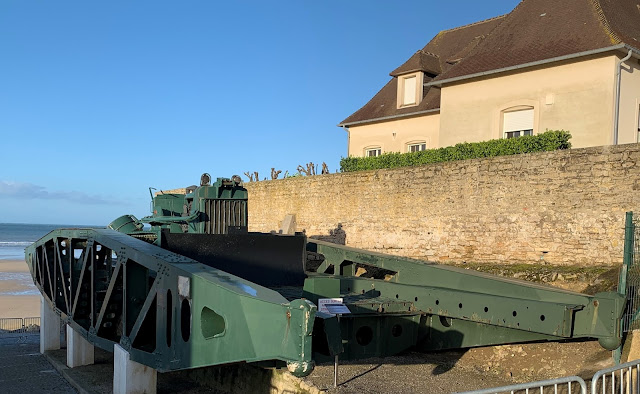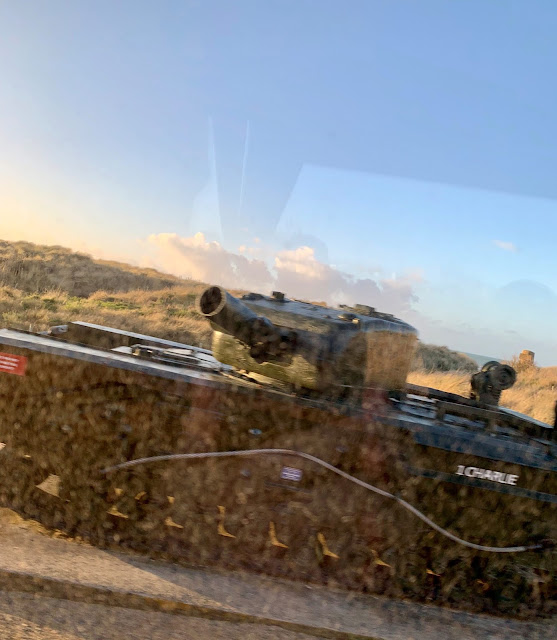Our trip to Normandy continues.
After visiting Honfleur, we headed to the Normandy beaches, where the Allies landed on June 6, 1944, D-Day. This year marks the 75th anniversary of D-Day.
Our guide, who grew up in Normandy, was extremely knowledgeable about WWII history, including why the Allied Powers chose the Normandy beaches to continue the Liberation of France. We learned a lot and even saw some remnants of German fortifications and the invasion force.
We first visited Omaha Beach, where a large U.S. force landed on June 6, 1944. While heavily fortified, the Normandy beaches were concerned to be the weakest point. The beach is incredibly long and, depending on the tide, extremely wide.
We arrived at low tide and were fortunate enough to see a rainbow.
At Omaha Beach are many memorials and small museums. Below are photos of two very large memorials.
We also visited the coastal town of Arromanches, the site of Port Winston, the temporary harbor where the Allies landed supplies for the armies trying to advance inland toward Paris. Below is a diagram in bronze depicting (a) the ring of concrete ships that were sailed from England and sunk as a breakwater to calm the inner harbor for unloading soldiers, armaments and supplies and (b) the pier and floating bridge connecting the pier and the beach.
Here is a better image from DDay.Center.
You can still see pieces of the temporary harbor on the beach and in the ocean.
Also at Arroamanches are some of the guns and tanks used during the battle of Normandy.
 |
| A tank on top of a German reinforced bunker |
We also visited the Normandy American Cemetery and Memorial at nearby Colleville-sur-Mer.
The cemetery is located on a bluff overlooking the Omaha Beach and the ocean beyond. We learned that the casualty rate for the first wave of our troops in the early morning on D-Day was 90%. By the end of the day, the casualty rate was 10%.
 |
| At the Memorial: A statue "Spirit of American Youth Rising from the Waves" |
 |
| In the Chapel: The altar |
 |
| At the Visitor Center: An infinity pool and a map of Operation Overlord |
 |
| At the Memorial: A map of the landings |
The visit to the cemetery was somber because it represents war, sacrifice and death. Still, the cemetery has some beauty, like the lovely trees and flower beds.
Later in the day, we traveled toward Caen and saw more sights along the way.
 |
| In the nearby town of Bayeuz is a memorial commemorating historic General de Gaulle's visit on June 14, 1944. |
We even saw another rainbow. It was a good day.
Next Up: St. Malo

























No comments:
Post a Comment